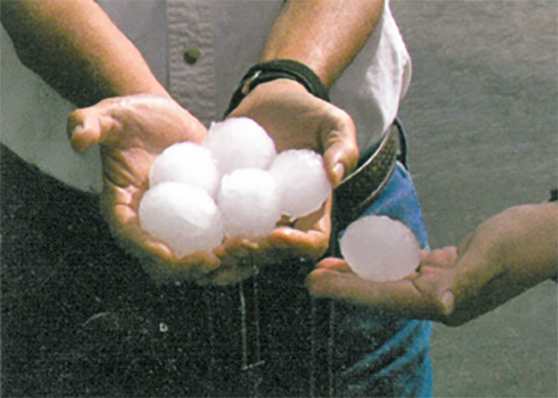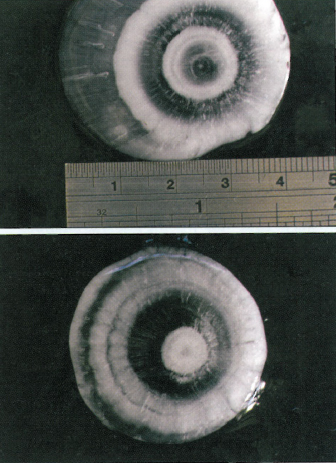Throwback Thursday: 20th Anniversary of 2004 Socorro Hailstorm
Oct. 3, 2024

These hailstones fell in the Bureau of Land Management parking lot in Socorro. Photo by Edward Wells.
On Oct. 5, 2004, a line of violent thunderstorms swept across the area between Albuquerque and Socorro, dumping rain and large hail in a very short time. But Socorro and New Mexico Tech’s campus were hit hardest, with baseball-sized hail that caused more than $10 million in damage. The entire event (Oct. 4-5, 2004, affecting Albuquerque to Socorro to almost Las Cruces) caused an estimated total of $40 million in damage, with more than 8,300 auto claims and 4,100 homeowner claims, according to Claims Journal, an insurance industry publication.
Many ran for cover and hoped for the best, but some NMT scientists headed to rooftops, and when safe, collected samples, took videos and photographs. Then-associate physics professor Dr. Richard Sonnenfeld did some analysis and published a note in the peer-reviewed New Mexico Geology (26:4) the following month. https://geoinfo.nmt.edu/publications/periodicals/nmg/26/n4/nmg_v26_n4_p125.pdf
In that note, he wrote: “I calculated the terminal velocity achieved by a 2-inch-diameter spherical hailstone would be 78 mph, whereas a 3-inch hailstone would hit the ground at more than 95 mph. The more typical pea-sized hail would be one-fifth inch in diameter, would reach a terminal velocity of slightly over 25 mph.” The momentum transfer of the larger stone would be over 3,500 times that of the pea-sized hail.
More links to the photos from that day are here.
http://kestrel.nmt.edu/~rsonnenf/atmospheric/2004_HailNew/photos/photo_9.html

These hailstones melted down from 3 inches in diameter, and clearly show the growth rings associated with hail formation. Photo by Harald Edens.